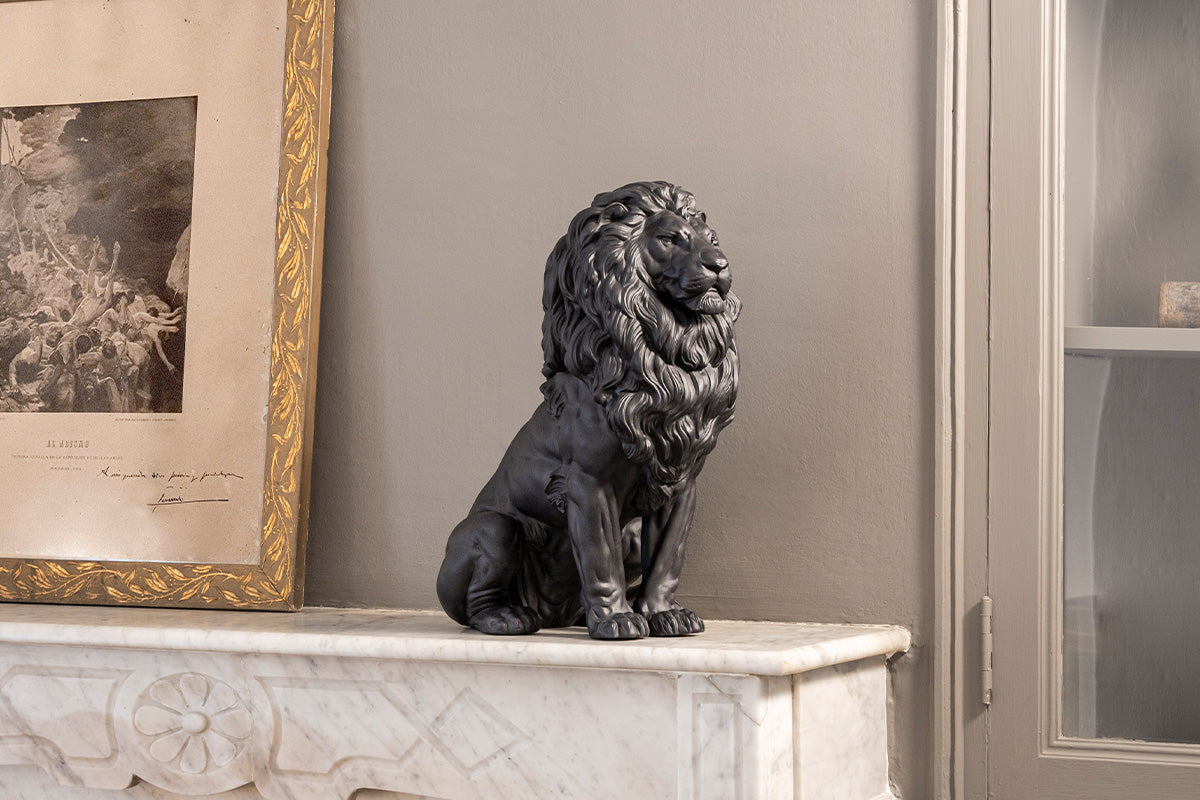6 Dragon Fables You Must Know
Tagged with:Culture & Civilisation
Share
What is the most popular mythical creature? If you guessed Dragons you’d be right! It’s not surprising either, dragons and dragon-like creatures can be found in the mythologies and folklore of almost every culture in the world!

With an almost universal presence across cultures, it follows that there is a myriad of fables, legends and myths about dragons. Here are our top 6 dragon myths from around the world.
THE LOCH NESS MONSTER
It’s hard to find someone who hasn’t heard of The Loch Ness Monster or ‘Nessie’, famously believed to reside beneath the murky depths of Loch Ness in the remote Scottish Highlands. Although the modern legend can be traced back to 1933, the secrets of the Loch Ness Monster have been a known part of highland culture even as far back as the first Roman occupation of Scotland in the first century A.D., even back then, depictions of the mysterious creature could be found on Pictish standing stones all around the Loch.
According to Scottish folklore, dragon-like creatures also known as kelpies were believed to inhabit the lochs of Scotland. These creatures had magical powers and could be malevolent if you strayed into their territory. One of the earliest references linking kelpies to the Loch Ness monster is in the writings of Saint Columba, who is beloved to have introduced Christianity to Scotland. According to legend, Columba was travelling to meet with a Pictish King when he suddenly noticed a strange animal predatorily watching a fisherman off the shore of Loch Ness. At the moment that the creature attacked, Columba put himself in the beast’s way with a raised hand and invoked the name of God. He then commanded the creature to “go back with all speed” and the beast obeyed by returning beneath the water’s surface.
YINGLONG AND THE GREAT DELUGE
China is well-known for its dragon iconography and myths which feature dragons a crucial figures in the birth of the land, culture and various dynasties. We could spend all day talking about the many dragon fables in Chinese mythology. Unlike Western dragons who typically breathe fire and are antagonistic, Asian dragons are usually elemental beings of the water and sky and are far more ambivalent towards humans. Learn more about the protective symbolism of dragons around the world.
Lladró’s Limited Editon Protective Dragon Sculpture with vibrant red and gold lustre scales.
Yinglong is a winged dragon and revered deity of the rain in ancient Chinese mythology, he appears in many myths to aid mankind and defeat malevolent beings. One such myth, tells the story of how Yinglong helped King Yu to prevent the Great Deluge from destroying China. The story goes that Yu’s father Gun was assigned by Emperor Yao to stop the Great flood once and for all, his father failed and as punishment, Gun was executed by the Emperor and Yu was given the lofty task of stopping the floods. Yu enlisted the help of the great dragon Yinglong and together they created canals and drainage systems that would allow the flood water to drain into the sea by using Yinglong’s tails to clear the path of the waterways. These waterways created many of the famous rivers around China and helped divide ancient China into the Nine Provinces.
THE LEGEND OF HA LONG BAY
One of the wonders of the natural world, Ha Long Bay in the North-East of Vietnam is awe-inspiring. With its forest-clad rock formations and vibrant blue waters, it’s not surprising that a location as unique as this has a truly legendary creation myth. It’s name meaning “descending dragon”, Ha Long Bay was believed to be the sight of a great battle that resulted in the bay’s formation.
Lladró’s Dragons Dome LED Table Lamp with water motif that reflects the Asian dragons’ elemental nature
During the formation of Vietnam, the Vietnamese people were fighting relentlessly to stop foreign invaders from entering the country from the sea and taking control. In a last-ditch attempt to protect his people and end the blood-shed, the Jade Emperor beseeched the Gods and the Mother Dragon to send her children to help defeat their enemies. The Mother Dragon heeded the call to action and rallied her children to face the invaders who were close to victory. The dragons destroyed the invaders by burning them with fire but as the flames tore through the enemies, giant emeralds started to appear along the bay. These emeralds were the teeth of the Mother Dragon and her children which were left behind as a barrier to ward off all future invaders and over time grew trees and became the famous rock formations that surround Ha Long Bay today.
According to legend, the Mother Dragon and her children decided to stay on Earth in human form to help the Vietnamese people rebuild. It is believed that the Vietnamese people are descended from these dragons.
SAINT GEORGE AND THE DRAGON
Lladró’s Limited Edition Saint George and the Dragon Sculpture.
The legend of Saint George and the dragon is about as classic as classic gets, with all the trappings of medieval legend such as brave knight, damsel in distress and evil dragon terrorizing the innocents. Although the story of Saint George and his martyrdom was believed to have occurred around 303 A.D., his encounter with the dragon originated during the Middle Ages.
During his travels, Saint George arrived upon a small village that was being terrorized by a dragon. To quell the dragon’s hunger the people would sacrifice sheep to it every day until the dragon grew tired of sheep. The King decreed that the only way to appease the dragon was to randomly select a child every day to be sacrificed to the dragon This was until the day the King’s daughter was selected, as she was being led away to the dragon’s lair, St.George came discovered what was happening, he was so horrified by this sacrifice, he offered to slay the dragon himself. As he battled the dragon on his noble steed, he noticed a tender patch of skin underneath the dragon’s arm, he swiftly plunged his lance into the spot, piercing its heart and slaying the beast.
The village honoured Saint George with a great feast and he was last made patron saint of England. Want to learn more about mythical creatures? Click here to discover where fairies came from.
THE BAKUNAWA
The Bakunawa is an ancient serpent-like dragon in Fillipino mythology that dwells beneath the ocean and is the cause of eclipses, earthquakes and rain. There are many legends relating to how the Bakunawa came into being, one such legend tells the story of how the Bakunawa caused the first eclipse.
Lladró’s Dragon Sculpture in glossy white porcelain and gold lustre.
According to legend, Bathala was an ancient deity who created seven moons to illuminate the Earth during its’ darkest hours. These moons were so beautiful that they caught the attention of the Bakunawa even all the way down on the ocean floor. The Bakunawa fell in love with their unearthly glow and envied Bathala for his ability to create such beauty. He decided to keep their beauty to himself, so one night he rose from the murky depths and swallowed one of the moons. Each night he would return to devour one of the moons until there was only one left. The people of Earth watched this happen with shock and despair as Bakunawa ate the last moon and plunged the world into darkness. The people were so furious at the great dragon for taking the moons that collectively screamed at the creature to return the moon. This startled the Bakunawa so much that he accidently spat the moon back into the sky and fled back to the safely of the ocean’s depths.
THOR AND THE MIDGARD SERPENT
Jörmungandr also known as The Midgard Serpent, is the great dragon that encircles the world in Norse Mythology. The beast is famously an old foe old of Thor - the god of thunder.
One such epic tale tells the story of Thor’s fishing trip to catch and slay the gigantic monster. As part of the preparation for a great feast, Thor convinced the giant Hymir to go fishing with; what he didn’t tell Hymir was that he intended to finally defeat his old nemesis by using the head of a bull to lure him in. The creature took the bait and Thor raised his hammer to kill it but the serpent began violently thrashing about in the water and spitting lethal poison in an effort to escape. In a moment of panic, Hymir cut the fishing line and the beast escaped from Thor once again. Thor was so enraged by what the giant has done that he shoved Hymir out of their boat and rowed back to shore to rejoin the feast, leaving Hymir to sullenly swim back alone.
Did we miss your favourite legend? Do you have a topic you want to hear about? We always want to know what our readers think.







